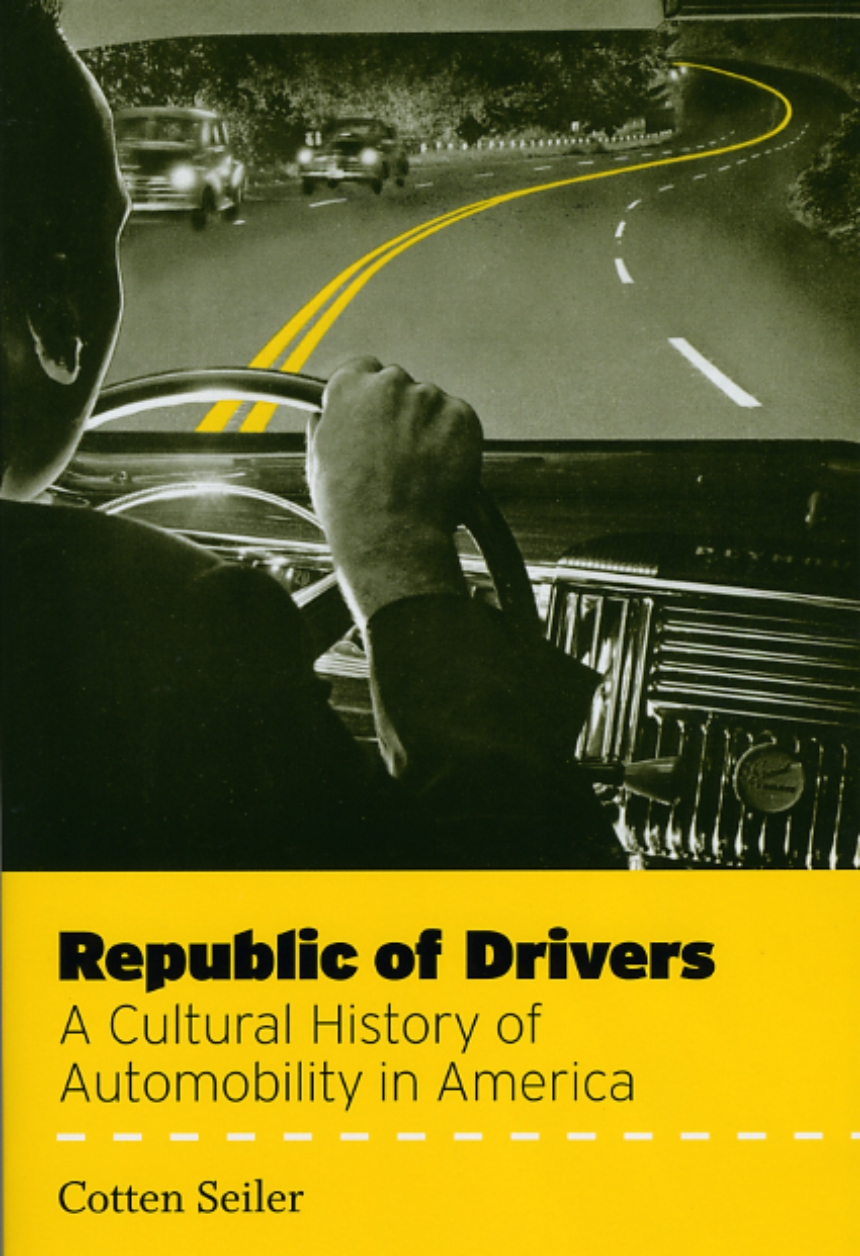Republic of Drivers
A Cultural History of Automobility in America
Rising gas prices, sprawl and congestion, global warming, even obesity—driving is a factor in many of the most contentious issues of our time. So how did we get here? How did automobile use become so vital to the identity of Americans? Republic of Drivers looks back at the period between 1895 and 1961—from the founding of the first automobile factory in America to the creation of the Interstate Highway System—to find out how driving evolved into a crucial symbol of freedom and agency.
Cotten Seiler combs through a vast number of historical, social scientific, philosophical, and literary sources to illustrate the importance of driving to modern American conceptions of the self and the social and political order. He finds that as the figure of the driver blurred into the figure of the citizen, automobility became a powerful resource for women, African Americans, and others seeking entry into the public sphere. And yet, he argues, the individualistic but anonymous act of driving has also monopolized our thinking about freedom and democracy, discouraging the crafting of a more sustainable way of life. As our fantasies of the open road turn into fears of a looming energy crisis, Seiler shows us just how we ended up a republic of drivers—and where we might be headed.
Cotten Seiler combs through a vast number of historical, social scientific, philosophical, and literary sources to illustrate the importance of driving to modern American conceptions of the self and the social and political order. He finds that as the figure of the driver blurred into the figure of the citizen, automobility became a powerful resource for women, African Americans, and others seeking entry into the public sphere. And yet, he argues, the individualistic but anonymous act of driving has also monopolized our thinking about freedom and democracy, discouraging the crafting of a more sustainable way of life. As our fantasies of the open road turn into fears of a looming energy crisis, Seiler shows us just how we ended up a republic of drivers—and where we might be headed.
240 pages | 10 halftones, 4 line drawings | 6 x 9 | © 2008
Culture Studies:
Geography: Cultural and Historical Geography
History: American History
Literature and Literary Criticism: American and Canadian Literature
Political Science: Political and Social Theory
Sociology: Collective Behavior, Mass Communication, Social History
Reviews
Table of Contents
Acknowledgments
Introduction: Automobility and American Subjectivity
Chapter 1: Individualism, Taylorization, and the Crisis of Republican Selfhood
Chapter 2: Workmen’s Compensation, Women’s Emancipation: The Promise of Automobility, 1895–1929
Chapter 3: Crafting Autonomous Subjects: Automobility and the Cold War
Chapter 4: “So That We as a Race Might Have Something Authentic to Travel By”: African American Automobility and Midcentury Liberalism
Chapter 5: “How Can the Driver Be Remodeled?”: Automobility and the Liberal Subject
Conclusion: Automobility’s Futures
List of Abbreviations
Notes
Index
Introduction: Automobility and American Subjectivity
Chapter 1: Individualism, Taylorization, and the Crisis of Republican Selfhood
Chapter 2: Workmen’s Compensation, Women’s Emancipation: The Promise of Automobility, 1895–1929
Chapter 3: Crafting Autonomous Subjects: Automobility and the Cold War
Chapter 4: “So That We as a Race Might Have Something Authentic to Travel By”: African American Automobility and Midcentury Liberalism
Chapter 5: “How Can the Driver Be Remodeled?”: Automobility and the Liberal Subject
Conclusion: Automobility’s Futures
List of Abbreviations
Notes
Index
